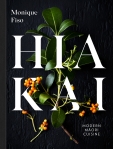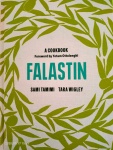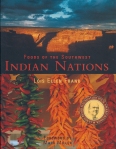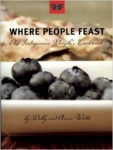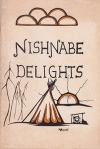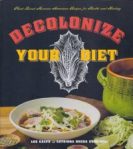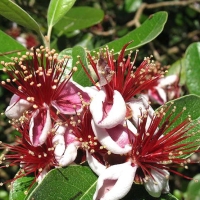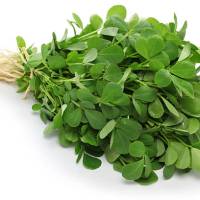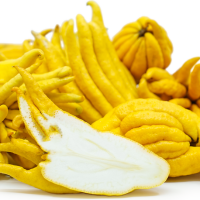I sometimes think I am the most fortunate of people. I have always wanted to make elderflower cordial but, as an adult, seldom lived in countries which grew Sambucus nigra or the common elder. They grow in Europe, West Asia and North America, they do not grow in the African or Oceanic continents. But here in my new home town, in fact, in my new garden, I have plentiful access to Elderberry trees (there are lots of common names e.g black elder, boor or bur tree, pipe tree, and arn tree). So guess what I have been making!
But first some elderberry tree information. The Elder gets its name from the Anglo Saxon word meaning ‘hollow tree’. If you are into peashooters, or whistles, then this is the tree for you because the twigs can be hollowed out and used for the above. The RHS site says, ‘S. nigra is a bushy large shrub or small tree to 6m, with pinnate leaves turning pale yellow in autumn, flat sprays of fragrant cream flowers in early summer followed by small black berries’ in autumn. Do not eat either the flowers or berries without cooking, they taste awful and are harmful, and do wear gloves when handling. Elder is mainly spread by birds who scatter the seeds or eat them and then spread them in their droppings. It is said to be (The Book of the British Countryside, 1973) the only tree that rabbits do not like but it thrives on rabbit warrens and in fact any soil enriched by the droppings of brids or beasts.



The Gardeners Path tells us that though both the berries and the flowers have been used in traditional medicines for many hundreds of years, it is the flowers which have additional benifits over those of fighting infections and boosting the immune system that have been found to be common to both.
Where to start with the medicinal benifits of elderflower. Such a wide array of diverse health benefits, it is said, are rarely found in single plant products like flowers or berries. From the pre-historic periods, people have heavily relied on the antiseptic, astringent, anti-inflammatory, and antimicrobial properties of this flower. Unverified medicinal benefits of elderflower include its use for the following: the common cold, constipation, cough, flu, bronchitis, rhinosinusitis, minor bleeding, rheumatoid arthritis, sore eyes and as a mouthwash. In addition, ‘they are natural antihistamines, and when taken prior to the appearance of pollen, can ease symptoms of seasonal allergies.’ (Gardeners Path). Clinical studies are also starting to show that these flowers can reduce blood sugar, potentially useful for addressing type 2 diabetes (Badescu.M et al, 2014, Schon. C, et al, 2021). HealthyGreenSavy notes that elderflower is being researched for its effect on insulin resistance as well as its potential use for Parkinson’s disease, breast cancer, and controlling blood sugar and cholesterol.
Clearly, with so many benifits an array of preparation procedures are needed. There are recipes for salves, oils, infusions, cataplasm, tinctures, powders, and my favourite, cordial and syrup. The berries too can be used. They are insipid when raw but make good wine and are used in pies and jellies. (The Book of the British Countryside, 1973, p150)
But I think I will take a side step from health and research to look at the fairies and witches and and elderflower. My friend, Dianne, suggested I look at the role of the Elder tree in oral traditions, and she sent me some literature which especially focussed on those stories which include fairies. I was struck by the use of one illustrator’s work in the articles I read on the Elder tree and Fairies, witches and demons. Cicely Mary Barker (1895-1973) was an illustrator and creator of the various works of Flower Fairies. Cicely always asked her model (often her sister) to hold the flower, twig or blossom of a particular fairy, for she wanted to be sure of the accuracy of her depiction of the shape, texture and form of the plant. Her only alteration was to the size, she enlarged the flower to make it the same size as the child.



Cicely’s flowers are always botanically accurate. If she could not find a flower close at hand, she enlisted the help of staff at Kew Gardens, who would often visit with specimens for her to paint. In a foreword to one of her early editions, she wrote that she had drawn all the plants and flowers very carefully from real ones and everything was as true as she could make it, that she had, however, never seen a fairy. (source: Cicely Mary Parker, Wikipedia). In the illustrations above we see her model(s) next to an elder flower.
Cicely’s illustrations are a romanticised version of what it is to be a fairie. The many oral traditions which dwell on the elder are not always so kind or glowing. The tree itself is seen as having magical and spiritual properties (British fairies), and burning it was seen to bring disaster, could end your life by suicide, could lead to your barn burning down or your cattle dying (K.Briggs, A dictionary of fairies, 1977). The elder, has many associations with the fairy world in oral traditions of recent centuries in for instance Celtic countries. On the Isle of Man it is commonly thought of as the ‘fairy tree’. In Ireland many individual elder trees were thought haunted by fairies or demons. The tree was said to repel witches and to carry a piece with you protected you from the actions of witches. But make sure you have asked permission to take this piece from the tree – or else! The same types of beliefs are reflected in UK mainland oral traditions, where fairies are associated with the elder. Fairies lived in the trees, branch swaying shows fairies are riding on them (British fairies), thus to interfere with the elder tree is to invite misfortune.
Thomas Keightley (Fairy Mythology, 1892) notes the following in relation to the folk tales of Scandinavia:
In the popular creed there is some strange connexion between the Elves and the trees. They not only frequent them, but they make an interchange of form with them … There is an elder-tree growing in a farm-yard, which frequently takes a walk in the twilight about the yard, and peeps in through the window at the children when they are alone.
It was, perhaps, these elder-trees that gave origin to the notion. In Danish Hyld or Hyl—a word not far removed from Elle—is Elder, and the peasantry believe that in or under the elder-tree dwells a being called Hyldemoer (Elder-mother), or Hyldequinde (Elder-woman), with her ministrant spirits. A Danish peasant, if he wanted to take any part of an elder-tree, used previously to say, three times—”O, Hyldemoer, Hyldemoer! let me take some of thy elder, and I will let thee take something of mine in return.” If this was omitted he would be severely punished. They tell of a man who cut down an elder-tree, but he soon after died suddenly. It is, moreover, not prudent to have any furniture made of elder-wood. A child was once put to lie in a cradle made of this wood, but Hyldemoer came and pulled it by the legs, and gave it no rest till it was put to sleep elsewhere. Old David Monrad relates, that a shepherd, one night, heard his three children crying, and when he inquired the cause, they said some one had been sucking them. Their breasts were found to be swelled, and they were removed to another room, where they were quiet. The reason is said to have been that that room was floored with elder.
Finally, Treesforlife tells us that people saw the Elder as being a protective tree. It was auspicious if it was growing near one’s dwelling, especially if it had seeded itself there. The Elder’s place was at the back door; people believed it kept evil spirits from entering the home. The aroma of the leaves had long been known to repel flies. So this folklore may have been borne out of the need to keep disease-carrying insects away from the kitchen. People also hung bunches of leaves by doorways, in livestock barns, and attached to horses’ harnesses. Planted around dairies people believed it kept the milk from ‘turning’. They hung cheese cloths and other linen involved in dairying out to dry on elder trees. The smell they absorbed from the leaves may have contributed to hygiene in the dairy. Elder trees were also planted by bake houses as protection from the Devil (what with all those hellishly hot ovens within!) and loaves and cakes were put out to cool under the elders. That said, any foods left out overnight under an elder were considered a gift to the faeries.
Which returns us to the elderflower as a consumable. There are quite a lot of ways to use elderflower which are not necessarily health based – the receipes for the obvious syrups and champagnes and cordials are easy to find. Rural sprout gives sources and recipes, including ones for Elderflower Fool, Sorbet, Ice-lollies, Syllabub, Custard, Jelly, Jams and also a savoury one for Tempura. The BBC Good Food site has a lovely recipe for a Lemon and Elderflower cake and a Lemon and Elderflower traybake, as well as an intriuging Mint and Elderflower Salad Dressing and lastly one for an Gooseberry and Elderflower Trifle.
But today I am keeping it simple and offering you a recipe for Elderflower Cordial and this comes from Lynda Brown, The Preserving Book, 2010, p246.

Weekly Recipe


